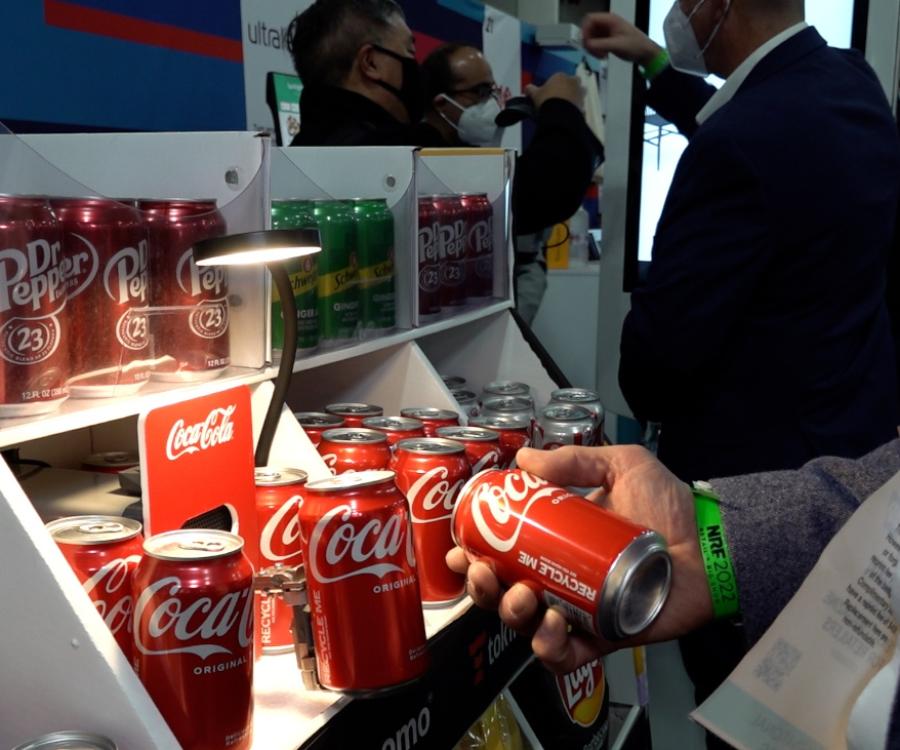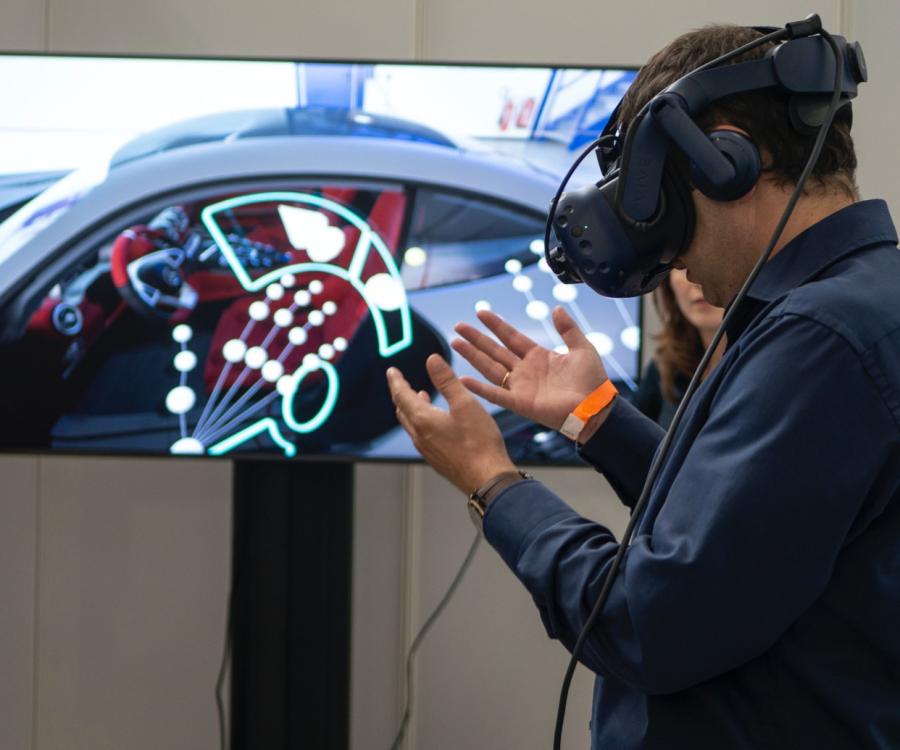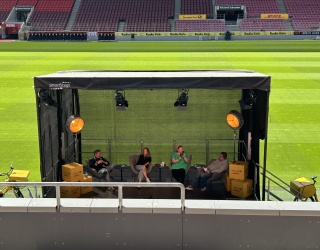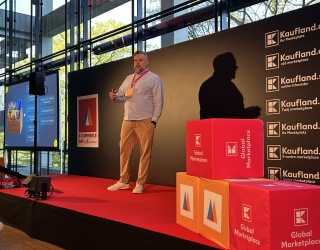Virtual fashion shows, mountaineering, and test drives: Virtual reality (VR) is creating a new paradigm for the customer experience – not only in brick-and-mortar stores but also in online shopping.
"It's always remarkable and fascinating to see the power of virtual reality as a medium when someone puts on VR glasses for the first time," says Jonathan Harth, M.D., Department of Sociology at the Witten/Herdecke University. He studies the impact of digitization and computer technology on society.
A VR headset allows you to see a virtual 3D environment. It makes you feel like you are in a different place. "A virtual environment is able to completely overwrite the real world setting. It might be outer space, but it can also be the shopping mall next door that can be virtually recreated. There are no limits except for the limited imagination of the designers, "explains Dr. Harth.
VR: Fancy experiment or the future of shopping?

Personal use of VR is slowly catching on. But it’s businesses that have also begun to experiment with the unlimited possibilities of VR technology.
What future potential does VR offer retailers and what are some of the practical ways it is already being used? According to Ipsos, more than half (52 percent) of Germans are interested in shopping using virtual reality.
Entertainment through experiential marketing
Several retailers have already shown the great potential of VR for creative and exciting marketing campaigns.
The promotional campaign "Splash!" by the British fashion retailer Topshop in the spring of this year spread like wildfire on social media. The company installed a slide inside its biggest store in London. While customers took a real ride on the slide, they felt like they were racing through Oxford Street thanks to the use of VR glasses.
Tommy Hilfiger already used virtual reality technology in the fall of 2015 in select stores around the world to show a fashion catwalk show of his fall collection. Armed with VR glasses, guests were able to get a “front row experience” and even got a glimpse of some backstage moments.
A different kind of product presentation
These types of unique experiences attract attention and prospective customers will unquestionably remember them for quite some time. "VR definitely helps retailers to attract people back to the stores thanks to an amazing experience," says Dr. Harth. "Ideally, the experience also matches the theme, product or business." The use of VR could increase the long-term marketing effects as a result.
This spring, the cheese manufacturing company Castello offered its creations in a food truck for customers to sample. The itc promotion agency created an interactive VR game for the occasion. Managing Director Andreas Blum said this about the multisensory marketing campaign: "The virtual game lets guests who wear VR glasses catch cheese flakes, while they enjoy 'real' slices of cheese at the same time."
For its launch of a new hiking boot, the American outdoor footwear and apparel manufacturer Merrell arranged the creation of the alpine VR environment "TrailScape". Armed with an Oculus Rift headset, guests were able to climb a virtual mountain path. The installation consisted of physical features like a rock wall, a fan and a real wooden bridge. In doing so, the simulation of the mountain panorama was enhanced with multisensory elements. Combined with motion sensors and tracking technology indicating the position and viewing direction in the virtual image, VR becomes an extremely immersive experience.
Real benefits for customers thanks to the power of visualization

The experience factor is not the only advantage of VR. The technology can also be used to create real benefits for consumers. It has a great deal of potential, especially when it comes to design, optics, and layout. Dr. Harth explains that “things you had to previously visualize what they might look like, can now be made tangible and realistic with this technology.”
That’s why it's not surprising that some furniture stores are already utilizing VR. When furniture elements are recreated true to scale in an artificial environment, it allows customers to set up furnishings within the settings and choose designs. It’s a practical tool that lets them see how the new furniture pieces might fit into their own living rooms or kitchens.
Back in the spring of 2016, IKEA was one of the first furniture retail companies to implement this with its virtual Kitchen Planner. Other furniture stores like Macy's or Ashley Furniture followed suit. Lumimart also uses VR to showcase its lighting solutions.
In addition to products, this also makes selected features or individual designs “experienceable". Before they order or buy an item, customers already get a pretty good idea of what the end product will look like. If at a later date, they prefer to have the reading lamp in a different color, the item can still be exchanged. This is not an option in some other cases, for example, when it comes to detailed features of a new car. In this setting, a true-to-life visualization is very helpful prior to making a purchase. Several Audi dealerships now offer the "Audi VR experience": it allows potential buyers to sit in a vehicle that has been digitally configured.

Ultimate convenience – Shopping from the comfort of your couch
Shop without leaving the house: thanks to VR, customers can not only take their homes to the store but also bring the store into their homes.
Consumers can virtually walk through more and more brick-and-mortar stores. Using the browser, they can move inside the store in 3D, similar to how things work with Google Earth Street View. This virtual environment can serve as a supplement or even as a replacement for an online store. The showcased products are tagged; customers can click the image and gain access to more information about the product and the online store.
The Cairo Designstores can be experienced in this way for example. Yet Cairo is taking things one step further. Armed with the corresponding Matterport VR app, a smartphone and VR glasses, curious minds can also browse the stores in Frankfurt and Nuremberg in a virtual reality environment.
In Japan, the Team S Company is working diligently to top it all. The goal is that by 2020, Japanese customers will not only be able to browse selected stores online thanks to an artificially created simulation but also be able to virtually visit the real (brick-and-mortar) store with live images. The plan is to use artificial intelligence to guide customers through the aisles and make recommendations. Customers select items by voice command, which are then delivered to their homes. Getting the full experience from the comfort of their couch.







